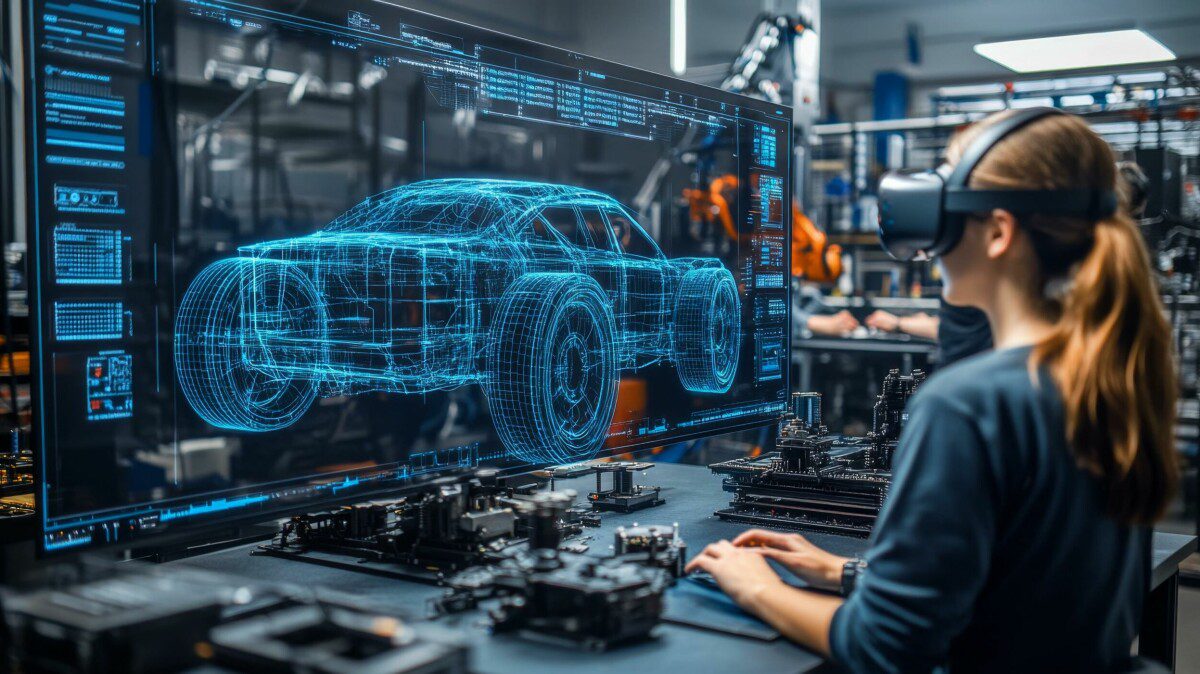In today’s fast-paced industrial world, the heartbeat of automation is no longer just the physical machinery—it’s the intelligence behind it. Motors may move the parts, but it’s the control systems that dictate how, when, and why they move. As automation grows more advanced and industries demand more efficiency, safety, and flexibility, the technology responsible for managing electrical motors is evolving at a remarkable pace.
At the core of this transformation is a convergence of digital intelligence and traditional electrical infrastructure. Where once a motor was manually operated or controlled by simple relay logic, now it’s governed by sophisticated programmable systems, networked communications, and predictive analytics. The industry is witnessing a shift from reactive to proactive motor control—essentially giving machines the ability to think ahead.
The New Role of Motor Intelligence
Motors are central to countless processes in sectors like manufacturing, energy, water treatment, and transportation. Traditionally, these motors operated in relatively isolated environments. Operators monitored their performance through analog gauges, and if a motor failed, troubleshooting was often a lengthy, manual process.
Fast forward to today, and motors are becoming integrated into smart automation systems that do far more than just spin. They are embedded with sensors that constantly monitor temperature, vibration, load, and speed. These sensors feed data back into a centralized system where it’s analyzed in real time. As a result, maintenance becomes predictive rather than reactive, reducing costly downtime and extending equipment life.
This transformation doesn’t just benefit large facilities with massive budgets. Even mid-sized and smaller operations are tapping into smarter control systems thanks to modular, scalable solutions that bring big-data thinking to compact settings.
Motor Control’s Quiet Revolution
The motor control center (MCC) has long been the unsung hero of industrial electrical systems. Traditionally viewed as a cabinet housing motor starters, overload relays, and circuit breakers, today’s MCC is anything but basic. Modern MCCs integrate advanced communication protocols, energy monitoring tools, and safety mechanisms. They act as a central nervous system for motor-driven operations.
While not always the star of the show, the MCC is often where smart automation begins. Inconspicuously tucked away on the plant floor, it allows operators and engineers to manage and troubleshoot multiple motor loads from a single location. With the integration of intelligent motor control devices, MCCs are now capable of capturing real-time operating data and feeding it into broader industrial control systems or even enterprise resource planning platforms.
This integration ensures that decision-makers aren’t left in the dark. From energy consumption trends to fault history logs, everything is available at their fingertips, helping improve both operational efficiency and strategic planning.
The Rise of Intelligent Drives and PLC Integration
Variable frequency drives (VFDs) and soft starters have also become more intelligent, allowing for finer control of motor performance. These devices adjust motor speed and torque dynamically based on load requirements, reducing energy use and mechanical wear. But what really sets them apart today is their ability to communicate.
Modern drives can be integrated into programmable logic controllers (PLCs) or distributed control systems (DCS), creating a seamless feedback loop between the motor and the larger automation system. This closed-loop control allows for real-time adjustments to changing process conditions, enhancing accuracy, and reducing waste.
Moreover, by connecting these systems via industrial Ethernet or fieldbus networks, companies can centralize control of geographically dispersed operations. Whether you’re managing a single facility or a global network of production sites, you can monitor and adjust performance remotely with unmatched precision.
Safety and Compliance in the Digital Age
Alongside the rise of smart automation comes a renewed emphasis on safety. With increasing regulatory demands and a growing focus on employee well-being, motor control systems are evolving to include integrated safety features.
For example, smart MCCs and intelligent motor controllers can now support safety-rated protocols like Safety over Ethernet/IP or PROFIsafe. These systems ensure that motors can be safely stopped in the event of an emergency, all while maintaining communication with the rest of the control architecture. They also make compliance with standards like IEC 61508 or NFPA 70E more achievable, reducing risk for both people and operations.
In addition, diagnostic features enable rapid identification of unsafe conditions, such as overcurrents, phase imbalances, or ground faults, and initiate automated shutdowns before damage can occur. This level of preemptive action not only protects equipment but helps build a culture of safety across industrial environments.
A Connected Future for Motor Control
As Industry 4.0 matures and technologies like AI, machine learning, and digital twins continue to be adopted, the future of motor control looks more connected than ever. Systems will become even more autonomous, with motors self-optimizing based on real-time data and environmental feedback.
Imagine a system where motors not only report performance issues but also initiate their own maintenance requests or reconfigure themselves to adapt to changing production demands. This isn’t science fiction—it’s already beginning in pilot projects across advanced manufacturing sectors.
Cloud-based platforms will also play a role, allowing companies to access, visualize, and analyze motor performance data from anywhere. By leveraging edge computing alongside centralized analytics, businesses can ensure quick decision-making without sacrificing the richness of insight.
Final Thoughts
The shift toward intelligent motor control is redefining what’s possible in industrial automation. The humble motor is no longer a stand-alone device—it’s a smart, connected node in a much larger ecosystem. Whether it’s through smarter MCCs, integrated VFDs, or AI-powered analytics, motor control is becoming more predictive, more efficient, and more integral to strategic operations.
In an era where downtime is costly and efficiency is king, the real brains behind the motor are those unseen systems working tirelessly to keep everything running—not just better, but smarter. As industries evolve, those that embrace this intelligent infrastructure will not only gain a competitive edge but will also lead the way in building the factories of the future.



































